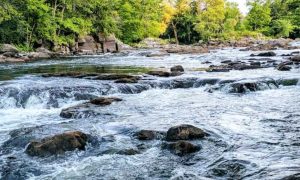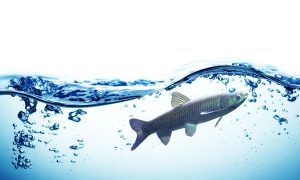
“Give a man a fish and you feed him for a day. Teach him how to fish and you feed him for a lifetime” Lao Tzu
Lao Tzu made this quote 25 centuries ago, and today brings also a wonderful analogy with the modern world of fish farming management.
Aquaculture is the process of rearing, breeding and harvesting of aquatic species, both animals and plants, in controlled aquatic environments like the oceans, lakes, rivers, ponds and streams. It serves different purposes, including food production, restoration of threatened and endangered species populations, wild stock population enhancement, the building of aquariums, and fish cultures and habitat restoration.
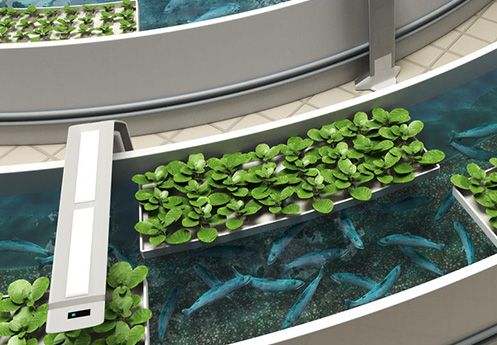
The practice of fish farming itself goes way back in the past, many millennia.
Since seventy percent of the world’s surface is covered in water, humans have realized its importance as a resource. For this reason, one of the areas heavily exploited regarding the use of water as a resource is aquaculture, especially in the production of food as opposed to using the terrestrial land.
By 2050 we’ll need to feed two billion more people. How can we do that without overwhelming the planet?
Population growth, income growth, and seafood’s heart-healthy reputation are expected to drive up demand by 35 percent or more in just the next 20 years. With the global catch of wild fish stagnant, experts say virtually all of that new seafood will have to be farmed.
The climate crisis has raised water temperatures, affecting the spawning and survival rates of wild fish, but traditional farming is also threatened by rising water temperatures.
Warming of the oceans will eventually drive fish farming on to land where the temperature can be controlled.
Indoor aquaculture could play a critical role in meeting the needs of a swelling human population and change the face of the fish farming.
Controlled environment can possibly be as close to zero impact on the oceans as we can get. “Quality, diversity, and sustainability.”
There are two basic forms of aquaculture
– extensive systems & intensive systems.
Extensive systems
Aquaculture is the process of rearing, breeding and harvesting of aquatic species, both animals and plants, in controlled aquatic environments like the oceans, lakes, rivers, ponds and streams. It serves different purposes, including food production, restoration of threatened and endangered species populations, wild stock population enhancement, the building of aquariums, and fish cultures and habitat restoration.
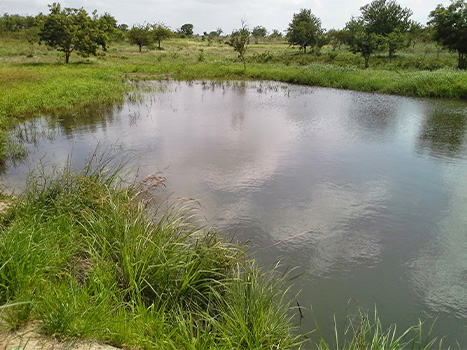

Intensive aquaculture
Intensive aquaculture relies on external food supplies and cleaning. They also have a much higher environmental impact than extensive systems. The result is the seafloor underneath and around the intensive system becomes inundated with waste, which adversely impacts surrounding life. Extensive systems need less interference and are the safer route, but intensive systems will have a role to play if the aquaculture industry is to make a significant contribution to fill the world’s demand for food and more specifically animal protein.
Farming systems are also diverse, for example including:
– Water – based systems
(cages and pens, inshore/offshore).
– Land – based systems
(rainfed ponds, irrigated or flow-through systems, tanks and raceways).
– Recycling systems
(high control enclosed systems, more open pond based recirculation).
– Integrated farming systems
(e.g. livestock-fish, agriculture and fish dual use aquaculture and irrigation ponds).
Most commonly used are OPFA & RAS
Is a technology where water is recycled and reused after mechanical and biological filtration and removal of suspended matter and metabolites. This method is used for high- density culture of various species of fish, utilizing minimum land area and water.
Open-air pond farms—found worldwide also have a track record of polluting local waterways with fish effluent and veterinary medicines that are used to keep disease at bay.
Land-based indoor systems can greatly reduce such risks. They isolate fish from the environment and remove most of the waste from the water.
Environmentalists have welcomed the new technology because of concerns about traditional open-pen farming.
Different RAS plants can have various ways of recycling their waste. Some use it for hydroponic farming, and some have a plan to sell it to fertiliser companies and as biogas to energy suppliers.
New advancements in water filtration and circulation make it possible for indoor fish farms to dramatically grow in size and production.
Fish need oxygen, fresh water and food.
Whether or not you choose to operate indoors or outdoors depends on your ability to provide those 3 key elements in your chosen location.
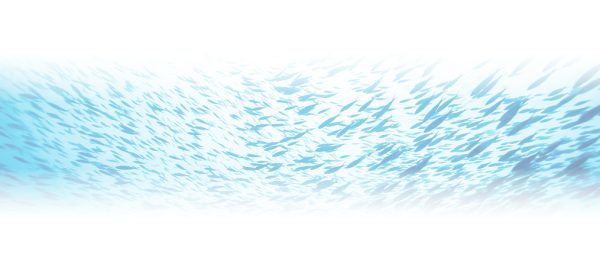
Detailed business plan should secure:
- Fish – select species appropriate for your setting (Most commonly chosen species for indoor growing include Tilapia, Koi, Trout, Catfish and European Perch, Rainbow trout)
- Location – provided location should have easy access to water source
- Selection of Pool or Tanks – size should be suitable for chosen species
- Water treatment – water filtration, water purification
- Water quality (pH adjustment, water temperature,monitoring of water parameters)
- Light
- Temperature
- Feed management – supply of nutritious and high quality food
- Aeration Pumps – Aeration is essential. Fish need sufficient oxygen to survive and grow.
- Various Operating equipment –basic equipment for moving feed from a storage building to the fish growing building.
- Tank maintenance and cleaning – assure clean water to maintain the efficient distribution of oxygen
Grow fish faster and plan harvest anytime during the year!
Most important parameters measured in fish farming are:
The level of dissolved oxygen (DO) is one of the most critical paramaters in water quality and fish farming. DO is incorporated into the water from atmospheric air and photosynthesis from phytoplanktons. To have healthy fish, oxygen levels of 60 to 70% saturation is needed. If the DO levels are to low that will affect fish and their growth.
Dissolved oxygen refers to the level of free, non-compound oxygen present in water or other liquids. This parameter tells us about water quality because of its influence on the organisms living within a body of water. Non-compound oxygen, or free oxygen (O2), is oxygen that is not bonded to any other element. Presence of free O2 molecules within water is actualy dissolved oxygen. If the oxygen molecules are bonded in water (H2O), that does not count toward dissolved oxygen levels.
Fish that seem lethargic and are more on the surface ot the water, face the problem of lack of oxygen. Sometimes they lose appetite and their growth can be affected. Bigger fish need more oxygen and if there isn’t enough oxygen they will develope symptoms sooner. Because all of that dissolved oxygen should be measured daily.
Concentration as little as 0,02 mg/L shows a toxic aspect on fish, depending on the species. It is relieving that some of the ammonia is ionized to ammonium (NH4+) when it enters the water.
pH determines how much ammonia will become ionized. If the pH decreases, the amount of ammonium will increase. Ammonium is more desirable than ammonia, because ammonium is less toxic to fish. Consequently, aquaculturists must measure both the pH and ammonia levels. That helps them to determine how much remains as ammonia, and how much is ionized to the less harmful ammonium.
Ammonium in its ionized form (NH3) is toxic when pH and temperature are high and dissolved oxygen is low. Ideally, keep ammonium levels below 0.1 ppm.
In the case of phosphates (PO4=), which are caused by excess concentrated food, they generate an increase in phytoplankton. This lowers dissolved oxygen concentrations.
For this reason, it is prudent to keep them at levels of 0.6 and 1.5 ppm.
Nitrate is one of the most important parameters in the evaluation of the quality of surface and groundwater. Nitrates are naturally present in surface and groundwater in low concentrations, but are harmful to humans and livestock and cause degradation in aquatic ecosystems in high concentrations. Nitrates enter the environment through human-induced pollution from a variety of sources, but the largest of these sources is from agricultural fertilizers. Other sources are sewage treatment discharge, septic systems, and pet waste. Nitrates are highly toxic, so their levels should be less than 0.1 ppm.
Nitrite
Nitrites (NO2=), are an intermediate step between ammonia (NH4+) and nitrates (NO3). Like ammonium, nitrites and nitrates are highly toxic, so their levels should be less than 0.1 ppm. Excessive nitrite can be toxic to fish. When nitrite interacts with hemoglobin, the iron becomes oxidized and the blood cell can no longer carry oxygen. Prolonged exposure to larger amounts can cause organ damage and thus decreased growth. Nitrites are highly toxic, so their levels should be less than 0.1 ppm.
SUSPENDED PARTICLES CAN BE:
– Organic origin (plankton): Necessary for aquaculture, contributes to feeding and growing fish.
– Inorganic origin (Acrilla): Acts as a filter of solar rays, which affects the production of phytoplankton, therefore, the production of oxygen.
IMPORTANCE OF TURBIDITY:
An increase in turbidity, with respect to the optimum for each species, causes a decrease in food consumption, causing sedimentation and decomposition of the remaining food at the bottom, impacting the amount of dissolved oxygen.
Water hardness of less than 20 ppm of calcium carbonate affects reproductive and growth processes in fish, with acceptable levels between 50 and 300 ppm. Optimum hardness levels for most species are between 75 to 150 ppm, these being considered as soft water.
For measurement pH/mV, ORP, Conductivity, TDS, Resistivity, Salinity, Seawater, Dissolved Oxygen, Atmospheric Pressure and Temperature. Monitor up to 12 different water quality parameters.
HI98494
Multiparameter Bluetooth® Portable pH/EC/OPDO® Meter
- Bluetooth connectivity and Hanna Lab App Compatibility: retrieve data logs with Hanna Lab app for either sending by e-mail or download to a smart device for review
- Waterproof, IP67 rated waterproof, rugged enclosure for meter, IP68 for probe
- Digital probe with Quick calibration feature: digital probe with built-in temperature sensor and three ports for pH (ORP), EC and optical DO sensors
- Automatic barometric pressure compensation and Automatic temperature compensation
- Logging: automatic interval logging of up to 45,000 samples
- USB type-C: computer connectivity for transferring logged data as .CSV file
HI98198
Optical Dissolved Oxygen Meter
- Rugged, portable dedicated dissolved oxygen (DO) meter designed for fresh and saltwater measurements of DO
- Waterproof meter complies with IP67 standards and measure DO, barometric pressure, and temperature
- Digital optical DO probe in a custom thermoformed durable carrying case with accessorise
- Built-in temperature compensation, salinity compesation, automatic barometric pressure compesation
- Built-in calculations Biochemical Oxygen Demand (BOD), Oxygen Uptake Rate (OUR) and Specific Oxygen Uptake Rate (SOUR) modes
HI98199
pH • EC •DO Waterproof Meter
Use three professional probes with Hanna’s Quick Connection.
- Versatile meter that can monitor pH, EC, and dissolved oxygen when paired with the respective probe
- Allowed measurement of pH and temperature with digital pH probe
- Measurement of conductivity, TDS (total dissolved solids), Resisitivity, Salinity, seawater s, and temperature when used digital EC probe
- Measurement of dissolved oxygen, atmospheric pressure, and temperature when used digital DO probe
If you need multiparameter meter for measuring pH/mV, ORP, Conductivity, TDS, Resistivity, Salinity, Seawater, Dissolved Oxygen, Atmospheric Pressure and Temperature check next:
HI98194 • HI98196
- Multiparameter measurement in a compact and rugged, IP67 waterproof body
- Field replaceable sensors
- Built-in temperature compensation, salinity compensation, automatic compensation for changes in atmospheric pressure
- Logging and log-on-demand allows users to record and save up to 44 000 samples
- Data can later be transferred to a PC
Easy and accurate turbidity measurements:
HI88713
HI98713
HI9829 series
GPS Multiparameter Meters
Modern GPS multiparameter meter for measuring pH, ORP, ISE, EC, TDS, Resistivity, Salinity, Seawater, Turbidity, DO, Temperature and Atmospheric Pressure.
- Waterproof portable logging multiparameter meter that monitors up to 14 different water quality parameters
- Measurement of key parameters including pH, ORP, conductivity, dissolved oxygen, turbidity, ammonium, chloride, nitrate, and temperature
- The probe transmits readings digitally with options to log data while disconnected from the meter
- Highly customizable and supplied with all necessary accessories, packaged in a durable carrying case.
HI801
Spectrophotometer iris
Parameters that can be measured with spectrophotometrical methods:
- Alkalinity
- Ammonia
- Calcium
- Free Chlorine
- Total Chlorine
- COD
- Copper
- Total Hardness
- Iron
- Nitrate
- Nitrite
- Total Nitrogen
- Dissolved Oxygen
- Phosphate
- Reactive Phosphorus
- Surfactants Anionic
Despite mentioned parameters there are more than 90 other parameters that can be measured on our spectrophotometer iris.
HI83303 Multiparameter Photometer
with Digital pH Electrode Input for Aquaculture
These meters are compact and versatile making them ideal for both benchtop or portable operation.
- Advance optical system: innovative optical design that utilizes a reference detector and focusing lens to eliminate errors
- Digital pH Electrode Input: measure pH and temperature with single probe, pH CAL Check™ alerts user to potential problems during the calibration
- Absorbance mode: Hanna’s exclusive CAL Check™ cuvettes for validation of light source and detector
- Units of measure: appropriate unite of measure along with chemical form is displayed
- Results Conversion: automatically coverts reading to other forms with the touch of a button
- Data Logging: up to 1000 photometric and pH readings can be stored
HI97105C
Marine Master Multiparameter Photometer

It offers an easier approach to the maintenance, especially in the field of scheduled tasks to be performed daily by technical staff. It provides continuous monitoring of D.O. levels and possibility of alarm settings. D.O. controlling & monitoring equipment is often used in conjunction with aerators, in this way minimizing the D.O. drift affected pond downtime.
- complete upgrade of production
- control system for your fish farm dealing with intensive fish culture.
Monitoring and control:
- environmental parameters (pH, D.O., temperature)
- fish feeding
- aeration
Oxygen content of the pond water can be influenced by two methods; by change of flow rate, and by aeration of pond water.
All of our equipment can be connected online, giving the users the commotion of connecting remotely.
HI510

HI510 is an advanced universal process controller that can be configured for many applications requiring monitoring and/or control of process parameters. This controller features a digital probe input that will automatically detect and update the meter with the parameter that it measures.
- Waterproof IP65 (Nema 4X) enclosure
- Multi-color LED status indicators & audible alarm
- Universal mounting with wall, pipe, and panel mounting options.
- Industrial Smart probes pH/EC/ORP/D.O./temperature
Analog Outputs
- Available with up to four analog outputs and 5 relays used forcontrol and for sending a signal to data loggers, PLC, SCADA and other remote monitoring systems
- 0-20 mA or 4-20 mA
- Scalable in selecting values for the range
- Can be used for control of pumps and valves
the HI510 Universal Process Controller

pH and Temperature
HI1006-18 and HI1016-18 series,designed for low conductivity or low temperature process environments.

ORP and Temperature
These smart industrial ORP probes are used for the measurement of the ratio of oxidized to reduced species in the process. Together with the Hanna Instruments HI510, they can monitor and control disinfection chemicals or follow and control a critical oxidation or reduction reaction.
- HI2004-18 and HI2014-18 platinum sensor series, designed to provide the best response over a wide range of applications

Conductivity and Temperature
The HI7630-48 series provides an exceptionally stable measurement over a wide measure range and does not require frequent calibration.
- Probes can be installed directly in-line, immersed in a tank, or flow cell.
- Suited for continuous measurement of conductivity

Galvanic Dissolved Oxygen
- Suited for continuous measurement of oxygen dissolved in water.
- An integral temperature sensor measures water temperature and adjusts the probe signal over the specified temperature range.
- probe can be installed directly in-line, immersed in a tank, or in a flow cell installation.
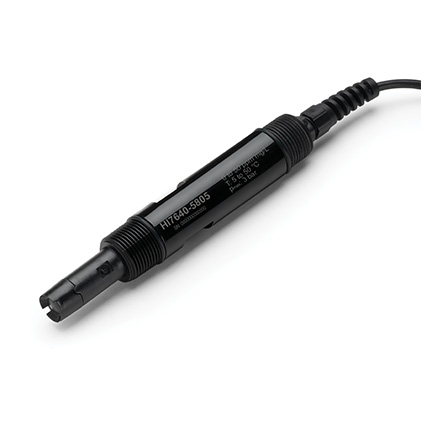
Optical Dissolved Oxygen
- Accurate DO measurements auto-compensated for barometric pressure, salinity (manually set), and temperature.
- Suitable for control applications in municipal and industrial wastewater treatment, where optimizing oxygen transfer is a key element, the probe can be installed directly in-line, immersed in a tank, or in a flow cell installation.
- Factory calibrated Smart Cap
- Low maintenance (no electrolyte refill or membrane replacement)
- Measurement reliability independent of flow rate
- Reduced response time
- Stable readings even when oxygen concentration is low
If you are thinking about polyculture
Aquaponics
Together with hydroponics can make a sustainable system in which the waste water from the fish tanks fertilizes the plants in the hydroponic beds.
Author:
Nives Vinceković Budor, mag.ing.chem.ing.
https://www.scientificamerican.com/article/the-future-of-fish-farming-may-be-indoors/ https://www.theguardian.com/environment/2020/dec/07/factory-farmed-salmon-does-it-make-sense-to-grow-fish-in-indoor-tanks
https://www.nationalgeographic.com/foodfeatures/aquaculture/
http://courses.washington.edu/ps385/making-aquaculture-sustainable/
https://www.conserve-energy-future.com/aquaculture-types-benefits-importance.php
https://eurofish.dk/are-recirculating-aquaculture-systems-the-future-of-mariculture/
Funge-Smith, S. Phillips, M.J. 2001. Aquaculture systems and species. In R.P. Subasinghe, P. Bueno, M.J. Phillips, C. Hough, S.E. McGladdery & J.R. Arthur, eds. Aquaculture in the Third Millennium. Technical Proceedings of the Conference on Aquaculture in the Third Millennium, Bangkok, Thailand, 20-25 February 2000. pp. 129-135. NACA, Bangkok and FAO, Rome.

